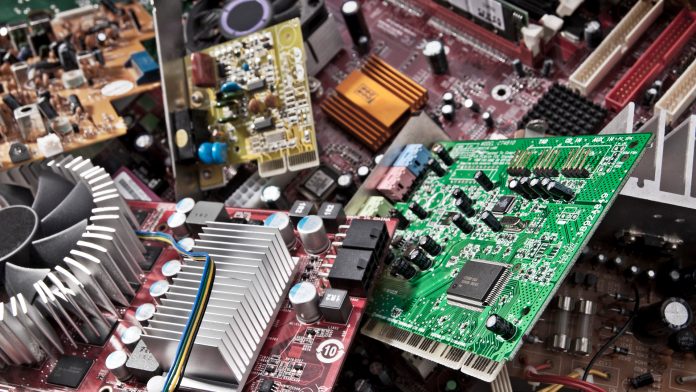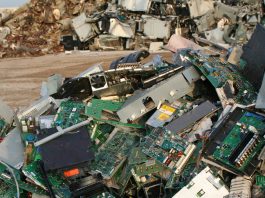Researchers at the American Chemical Society detect emerging synthetic antioxidants in dust from e-waste recycling workshops that could possibly pose a threat to its workers.
Manufacturers and e-waste recyclers usually add synthetic antioxidants to plastics, rubbers, and other polymers to make them last longer. However, the health effects of these compounds, and how easily they migrate into the environment, are largely unknown.
As a result, researchers reporting in The American Chemical Society’s (ACS) Environmental Science & Technology Letters have detected a broad range of emerging synthetic antioxidants, labelled ‘hindered phenol’ and ‘sulphur antioxidants’, in dust from electronic waste (e-waste) recycling workshops, possibly posing risks for the workers inside.
The ACS is a non-profit organisation chartered by the US Congress. Their mission is to advance the broader chemistry enterprise and its practitioners for the benefit of Earth and all its people.
Low-molecular weight synthetic phenolic antioxidants
Previous studies of these added that when synthetic antioxidants are exposed, that they can cause widespread environmental pollution and human exposure to a class of compounds called low-molecular weight synthetic phenolic antioxidants. In lab experiments, some of these compounds were assessed as toxic to both rodent and human cells.
Recently, manufacturers introduced a class of high-molecular weight synthetic phenolic antioxidants, also known as hindered phenol antioxidants (HPAs), with improved performance and slower migration from their products.
In addition to HPAs, compounds called sulphur antioxidants (SAs) are often added to rubber and plastic polymers as “helper” antioxidants. The toxicological effects and environmental occurrence of the majority of these new compounds still however remain unknown.
Analysing the occurrence of emerging HPAs and SAs in dust from centres
Therefore, Lixi Zeng and colleagues wanted to investigate the occurrence of emerging HPAs and SAs in dust from e-waste recycling centres. These are workshops where large amounts of discarded electronics, such as laptop computers, cell phones, tablets and wires are dismantled and processed.
In August 2020, the researchers collected 45 dust samples from three categories of e-waste recycling workshops in an industrial park in Yichun City, China: wire and cable dismantling, electronic plastic processing, and general e-waste dismantling.
The researchers then utilised liquid chromatography and tandem mass spectrometry to monitor 18 emerging HPAs and 6 emerging SAs. All 24 compounds were detected in the dust, with 22 being identified the first time, and some presented at relatively high levels compared with other e-waste pollutants.
Although dust concentrations of SAs were similar for the different categories of workshops, centres that dismantled wires and cables and processed electronic plastics had significantly higher levels of dust HPAs than those that dismantled general e-wastes.
The researchers concluded that given the ubiquitous occurrence of emerging HPAs and SAs in e-waste dust, further research is required on their environmental behaviours, fates, toxicities and risks.









